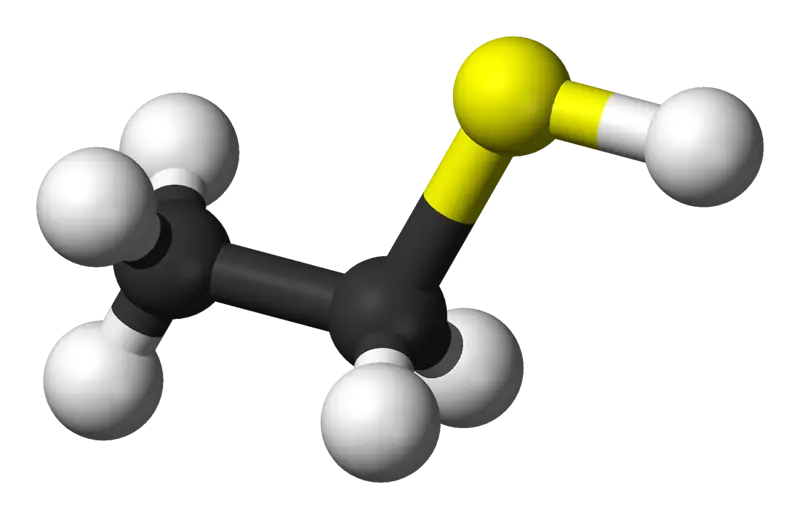
National Geographic, Feb 20 - If there's one smell you can't say isn't peculiar, it's natural gas. And good thing! Thanks to that distinctive stench, it is easy for us to distinguish when butane or propane systems are not working optimally and, therefore, when we should go on alarm. But that's not the only case of smells that are, in some way, saving our lives. Does rotten eggs or spoiled onions sound familiar to you?
Well, welcome to the world of ethanethiol, one of the most stinking molecules in existence... But also one of the most useful. Although its smell is frankly unpleasant, this compound has been strategically incorporated into certain gases to help us detect leaks and thus avoid unwanted tragedies.
THE SMELL WE LEARNED TO AVOID
But what exactly is this stinky molecule? Well, although ethanethiol may not sound familiar to you, perhaps the name of its family of compounds will: thiols, known for containing sulfur and, consequently, for having relatively strong and unpleasant odors. In fact, in nature, many of these compounds can be found around decomposing animals, in stagnant water or in rotten food. In other words, not very appetizing environments, right?
Therefore, it seems that it is not such a coincidence that humans have “learned” to feel a certain rejection towards these types of smells because, in the end, it is all a matter of survival. Over the years, our brain has evolved to interpret these aromas as a danger signal, thus alerting us that something could be toxic or have the capacity to harm us.
A very common example is the smell of rotten eggs. If you have ever smelled one, you will have experienced the “power” of a thiol. Ethanethiol is, however, one of the strongest: its smell is so potent that even in minimal concentrations, of the order of a few parts per billion, it is perceptible to the human nose.
A LIFEGUARD IN THE GAS INDUSTRY
Now, although our reaction is to get as far away from this type of odor as possible, someone, at some point, had a brilliant idea: why not give it a new purpose? Why not take advantage of its intensity and its ability to generate an immediate reaction in the human body?

And that famous application did not take long to appear: butane and propane gas. Both, commonly used in stoves, heaters and heating systems, present a major safety problem: they are odorless and colorless. This makes them really dangerous compounds because, if there is a leak, apparently, there is no way to detect them in the environment. Unless, of course, something can be added with such an unmistakable smell that no one can ignore it.
And yes, this is where ethanethiol appears. For years, the gas industry has used it as an odorant compound, that is, it is added in small quantities to the gas so that, in the event of a leak, anyone can detect it almost immediately. Precisely that “gas smell” that we all identify, in reality, is not from the gas, but from ethanethiol or, sometimes, from very similar compounds, such as methanethiol.
It is a strategy that, in the end, despite being very simple, has saved countless lives. We must bear in mind that an undetected gas leak can, at best, cause serious poisoning or, at worst, large explosions with catastrophic consequences. But thanks to ethanethiol, anyone, regardless of the level of knowledge, is able to realize that something is wrong and act on it in time.
IN MORE PLACES THAN YOU THINK
But if you think that ethanethiol's role is restricted to natural gas and domestic security, you are very wrong. Far from it, for example, this molecule has also made a place for itself in the oil industry. In this sector, ethanethiol is used in some refining processes and is capable of acting as a chemical marker to detect the existence of leaks in fuel storage or transportation systems.
On the other hand, due to its powerful smell, it is often used in scientific research to train odor detection teams in sensory experiments. In addition, in the world of security, its possible use in the detection of explosives or other dangerous substances has been investigated. Isn't it curious how such a detestable smell can find its way among us so easily? (Text and Photos: National Geographic)